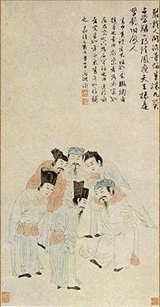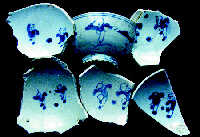 Football has found its way to the most remote corners of the globe, becoming one of the hottest topics of the day. About 2,500 years ago in China there was a similar game called "Cuju", which, according to the International Football Association, was the origin of football as a sport.
Football has found its way to the most remote corners of the globe, becoming one of the hottest topics of the day. About 2,500 years ago in China there was a similar game called "Cuju", which, according to the International Football Association, was the origin of football as a sport.
 Development ofCuju
Development ofCuju
"Cu" ("to kick") and "ju" (a type of leather ball filled with feathers) became popular during theWarring States Period(476-221BC). Back then,cujuwas used to train military cavaliers due to the fierce nature of the sport.
During theHan Dynasty(206BC-AD220), the popularity ofcujugradually spread from the army to the royal courts and upper classes. It is said that the Han emperor Wu Di enjoyed the sport. At the same time,cujugames were standardized as rules were established. Football matches were often held inside the imperial palace. A type of court called "ju" cheng was built especially forcujumatches, with six crescent-shaped goal posts at each end.
 |
|
Unearthed bowl with images ofcujuplaying
|
The sport was improved during the
Tang Dynasty(618-907). First of all, the feather-stuffed ball was replaced by an air-filled ball with a two-layered hull. Also, two different types of goal posts emerged: One was made by setting up posts with a net between them and the other consisted of just one goal post in the middle of the field. The level of female
cujuteams also improved. Records indicate that once a 17-year-old girl beat a team of army soldiers.
Cujuflourished during the Song Dynasty (960-1279) due to social and economic development, extending its popularity to every class in society -- from the emperor to ordinary civilians. At that time, professionalcujuplayers were quite popular, and the sport began to take on a commercial edge. Professionalcujuplayers fell into two groups: One was trained by and performed for the royal court (unearthed copper mirrors and brush pots from the Song often depict professional performances) and the other consisted of civilians who made a living ascujuplayers.
